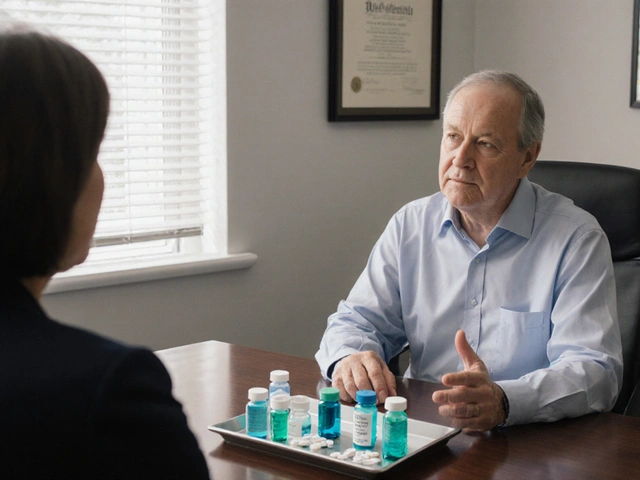Psoriasis Cream: Effective Treatments and What Actually Works
When your skin flares up with thick, red, itchy patches, psoriasis cream, a topical treatment applied directly to affected skin to reduce scaling, redness, and inflammation. Also known as topical psoriasis treatment, it’s often the first line of defense for mild to moderate cases. Unlike oral meds, it targets the problem right where it shows up—without flooding your whole body with drugs. But not all creams are created equal. Some just mask the problem. Others actually help your skin heal.
What makes a psoriasis cream work? It’s usually one of three things: corticosteroids, anti-inflammatory drugs that calm the overactive immune response in the skin, vitamin D analogs, like calcipotriene, which slow down the rapid skin cell growth that causes plaques, or coal tar, an old-school ingredient that reduces scaling and itching by slowing skin cell turnover. These aren’t magic. They need consistent use. Skip days, and the flares come back. Use them right, and you can go weeks without new patches.
But here’s the catch: what works for one person might do nothing for another. That’s because psoriasis isn’t just one thing. It’s triggered by stress, cold weather, infections, even certain meds. Your skin barrier is broken—not just dry. So moisturizers alone won’t fix it. You need the right active ingredient paired with a good base that locks in moisture. Look for creams with ceramides, hyaluronic acid, or shea butter. They help rebuild the skin’s natural shield while the active ingredient does its job.
And don’t fall for the hype. Just because a cream is labeled "natural" or "herbal" doesn’t mean it’s safer or better. Some plant extracts can irritate sensitive skin. Others just sit there doing nothing. Stick to what’s been tested. Talk to your doctor or pharmacist. Ask what’s in it, how it works, and how long it takes to see results. Most topical treatments take 2–4 weeks to show real improvement.
Some people try steroid creams for years without realizing the risks. Long-term use on thin skin—like the face or groin—can cause thinning, stretch marks, or even rebound flares. That’s why doctors often rotate treatments. Use a steroid for a few weeks, then switch to vitamin D or a non-steroid option like pimecrolimus. It keeps your skin responsive and avoids side effects.
What you won’t find in most creams? Cures. Psoriasis is chronic. But it’s manageable. The right cream, used with good habits—avoiding triggers, keeping skin moisturized, not scratching—can give you long stretches of clear skin. And if your current cream isn’t helping after a month, it’s time to try something else. Don’t wait for it to get worse.
Below, you’ll find real-life insights from people who’ve been there—what worked, what didn’t, and how they learned to live with it without giving up on their skin.




